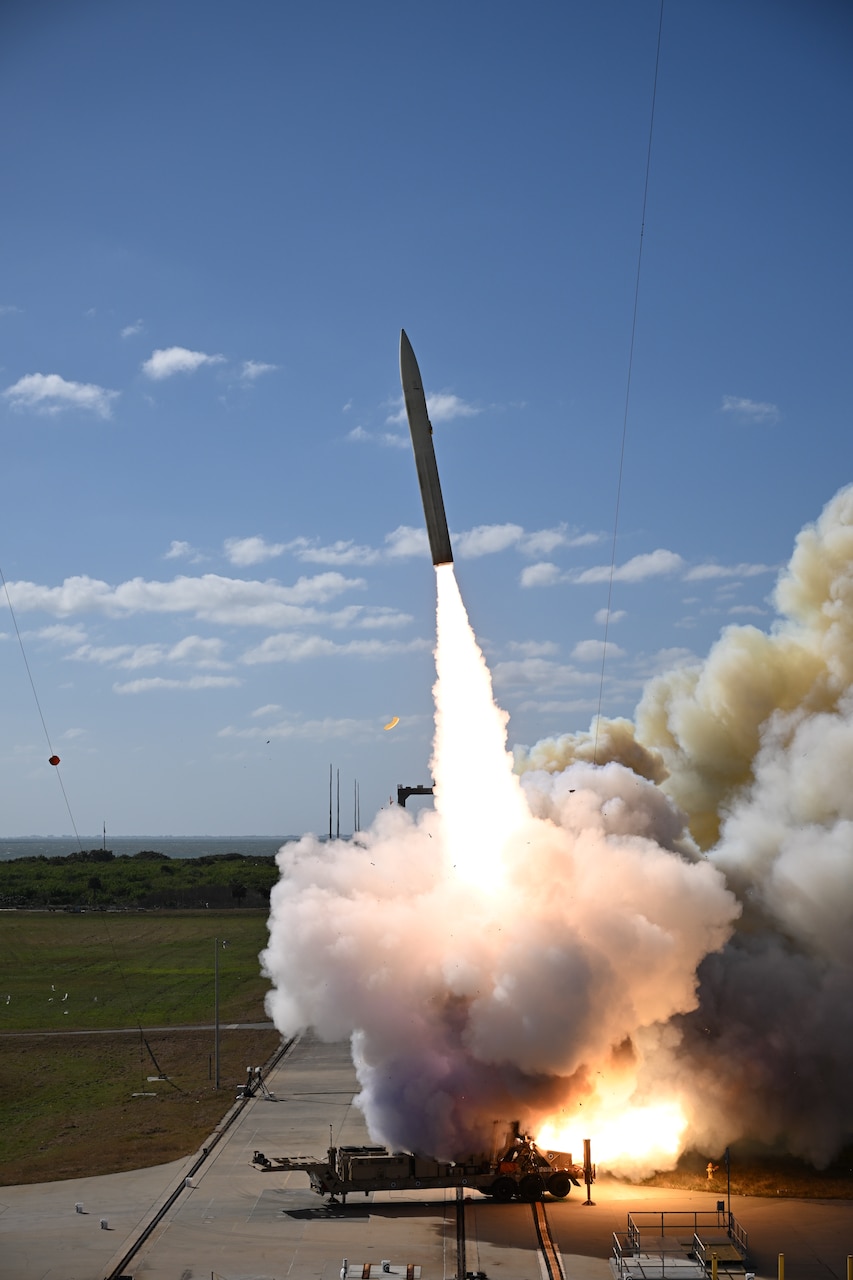After a prolonged delay due to testing challenges, the US Army is finally preparing to field its first Long-Range Hypersonic Weapon System.
A defense official confirmed to Defense News on February 26 that the system is expected to be deployed by the end of fiscal year 2025.
The United States is in a high-stakes race to develop and deploy hypersonic weapons while also working on systems to defend against them.
Both China and Russia have aggressively pursued hypersonic missile technology, conducting extensive tests and fielding new capabilities. The Army’s LRHW program is a key component of the US effort to keep pace with these developments.
The Army originally planned to field the LRHW to the 1st Multi-Domain Task Force, 5th Battalion, 3rd Field Artillery Regiment, 17th Field Artillery Brigade at Joint Base Lewis-McChord, Washington, by the fall of 2023.

However, the program suffered repeated delays due to issues with the launcher and the launch sequence, which prevented the Army from meeting its initial deadline.
A government watchdog report previously identified these technical hurdles as a key reason for the setbacks, highlighting that while the missile itself remained operational, problems with the firing mechanism and range conditions led to multiple aborted tests in 2023.
These issues, unrelated to the missile’s performance, underscored the complexity of integrating a new and highly advanced weapon system into operational use.
Then-Army acquisition chief Doug Bush said that thorough testing of the full system was crucial to ensuring safety, effectiveness, and battlefield readiness before the weapon could be deployed.
The repeated test failures delayed the fielding timeline, forcing the Army to refine its approach before moving forward.
Despite the setbacks, the program regained momentum in 2024 with a series of successful test launches that demonstrated the weapon’s effectiveness.
In May, the Army conducted a comprehensive end-to-end flight test of the hypersonic missile at the Pacific Missile Range Facility in Hawaii. This test was a crucial step in proving the system’s operational viability and provided valuable data on its performance.
Later in the year, in December, the Army and Navy conducted another successful all-up round test at Cape Canaveral Space Force Station, Florida.
This test involved the Common Hypersonic Glide Body (C-HGB), a key component of the system that allows the missile to travel at hypersonic speeds while maneuvering unpredictably.
The success of this test reinforced confidence in the program and signaled that the Army was finally approaching the finish line in its efforts to deploy the weapon.
US Army’s Long-Range Hypersonic Weapon (LRHW)
The US Army’s Long-Range Hypersonic Weapon (LRHW), commonly referred to as Dark Eagle, is a ground-launched missile system with a reported range of 1,725 miles. It features a hypersonic glide body and is supported by transport, fire control, and other operational equipment.
This truck-launched, land-based system can fire hypersonic missiles that can exceed 3,800 miles per hour. These missiles ascend to the upper layers of the Earth’s atmosphere, staying just beyond the reach of conventional air and missile defense systems before rapidly descending on their targets, leaving minimal reaction time for adversaries.
The Army has been collaborating closely with the US Navy to develop the LRHW, which consists of the Common Hypersonic Glide Body (C-HGB) and a 34.5-inch booster designed by the Navy.
While the Army’s version is launched from mobile ground platforms, the Navy’s counterpart, known as Conventional Prompt Strike (CPS), is designed for deployment from ships.
Although the Army’s plan to field the LRHW has faced delays, pushing the timeline nearly two years beyond the initial projection, officials emphasize that missile development programs typically take about a decade. The LRHW program, by comparison, has been in development for just over five years.

The Army has worked for years with Leidos’ Dynetics to build the necessary industrial base for C-HGB production, as the US private sector had no prior experience in manufacturing hypersonic weapons.
In addition, the Army has independently developed the launchers, trucks, trailers, and battle operations center required to assemble the first LRHW battery. Lockheed Martin serves as the weapon system integrator, responsible for launching the system from a mobile platform.
The LRHW is designed to provide the Army with a strategic attack capability, enabling it to counter Anti-Access/Area Denial (A2/AD) threats, neutralize enemy long-range fire capabilities, and target high-value, time-sensitive objectives.
A 2023 Congressional Budget Office (CBO) study titled US Hypersonic Weapons and Alternatives highlights the complexity of hypersonic missile development.
The study stresses that extensive flight testing is essential to protect sensitive onboard electronics, assess material durability, and accurately model aerodynamics at extreme temperatures, reaching up to 3,000°F.
- Contact the author at ashishmichel(at)gmail.com
- Follow EurAsian Times on Google News




